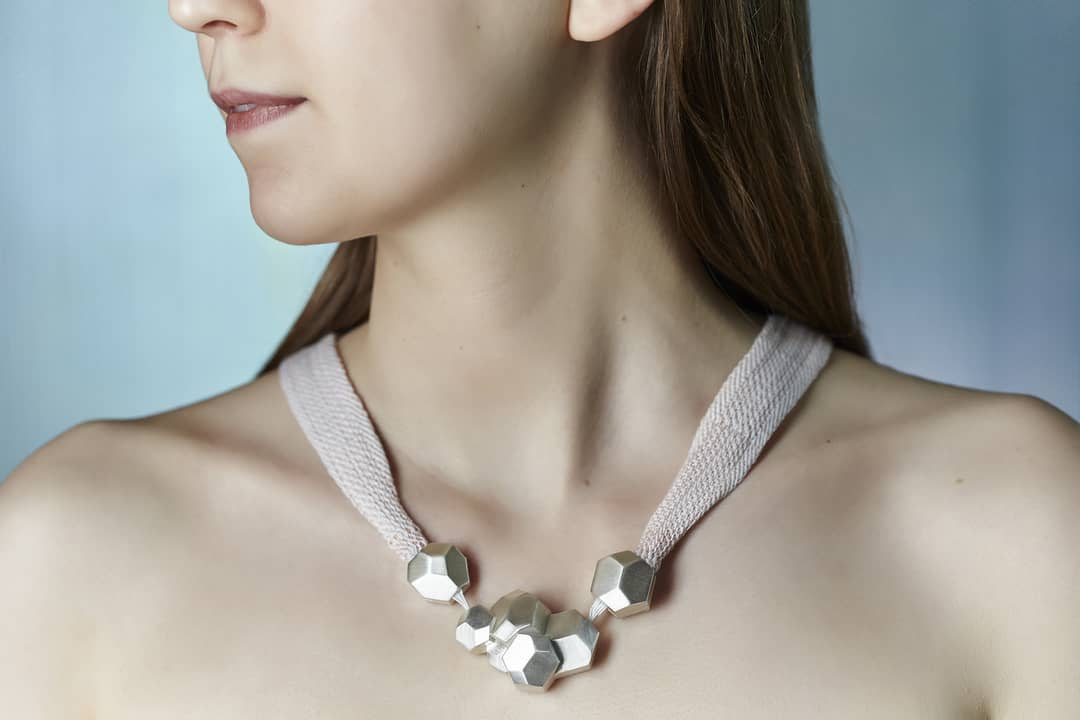Designing wearable technologies to solve some of our most pressing health challenges
As we increasingly rely on technological innovation for solutions to so many of our very human challenges, how can we ensure we’re creating technology that also resonates with people on an emotional level? That functions medically or technically, but also socially and psychologically?
How will we scaffold design capability around Australia’s technology innovations and the complex challenges researchers are addressing, to ensure they connect with their end-users?
I’ve led the design on projects that bring human-centred design to health challenges as diverse as hearing loss, diabetes and pre-diabetes, cardiovascular disease, gut disease, and loneliness.
In collaboration with partners from engineering, science, health and technology, wearable technologies have been developed, including “smart jewellery” to administer insulin and for cardiac monitoring, swallowable devices to detect disease, and emergency jewellery for times of medical crisis.
Work is underway to also design applications for stretchable sensors for heart health and post-operative monitoring, and to investigate the potential for these sensor “skins” to augment robotics for care scenarios.

Design brings with it many tools that, when mobilised around the challenges researchers are addressing, can significantly increase impact.
As well as methods for increasing the human-centredness of technologies, services and experiences, this includes participatory approaches for strengthening interdisciplinary collaboration across industry and academia, ways to visualise and prototype future technology applications and, critically, the skills to engage with consumers and communicate their lived experience to stakeholders.
So what does this process look like in practice?
Let’s look at the idea that design can strengthen the human-centredness of technologies.
This includes designing devices that better-connect with their users, but also developing the systems and services that intersect with these devices.
An example of this is Facett, the novel modular hearing aid designed for Blamey Saunders Hears. The design challenge was to de-stigmatise a medical device through thoughtful design. By reframing the medical as the personal, the design aimed to bypass the instinctual fear response that people have when confronted by something unfamiliar, such as losing a sense.

In order to shift the stigma of hearing loss, the design for Facett aimed to move hearing aids from disability to desirability.
To do this I sought inspiration in the mineralogy collection at the Melbourne Museum. I pored over the archival collections, located deep under the Carlton site, to find specimens to inform the colour, surface texture, form and clustering of the technology.
Another example is Diabetes Jewellery, developed with Nanotechnology Victoria. The design challenge was to design a drug-delivery device that administered a nano-engineered patch to the skin, to enable continuous delivery of insulin. The design, fashioned to look like jewellery, aimed at reducing the stigma for those who would ordinarily need to inject on a daily basis.
These are examples of “reframing” – a central skill of designers trained to look at complex problems from a variety of angles. The artefacts we generate (prototypes, drawings, mappings) help bring others on the journey with us.
Design can play an outsized role in the way our interdisciplinary teams work together, creating knowledge and disseminating this to the world. Drawing from co-design and participatory design approaches, we design activities that bridge disciplines and recognise new value at the interfaces of expertise areas.
What else could benefit from collaboration with design?
We could scaffold our existing design capability around wearable and sensing technologies, across the creation of assistive devices, apps and visualisations. This ties into the increasing trend towards customisation and personalisation of healthcare through wearable devices.
We’re seeing a massive growth in the amount of data our wearables and tracking apps are generating. But healthcare providers aren’t yet equipped to deal with this data, and there’s a disjunction between the data we’re bringing our clinicians and how that’s being integrated into our care plans, as well as questions about privacy.
Design can help in the upskilling of clinicians, in designing the wearable devices, and in refining the interfaces between technology, consumers and healthcare providers.
Design also has a role to play in the service and system-scale redesign of education to arm our clinicians with the skills in data visualisation and machine learning they’ll need in the future.
This is intrinsically connected to the digitisation and datafication of healthcare – something that has been accelerated by the COVID pandemic.
There’s work to be done from a design perspective to help workforces manage and understand this data; to contribute to conversations on the ethics of data collection; and to lead the design of data for insights and diagnosis.
Read more: Getting smart: Seniors see the benefits of technology in the home
There’s also a critical role that design can play in robotics and AI. In this space we can contribute to the design and interface of sensor systems that can provide robots with the capacity to care better for humans and non-humans. We can bring participatory design approaches to the development of AI to ensure a diversity of voices are being represented as algorithms are encoded.
Finally, design comes with practical ways to understand the lived experience of consumers. Across the Design Research Labs within Monash Art, Design and Architecture, Monash boasts world-leading experts in human-centred design, ethnography, mobility, and gender.
Scaffolding this expertise around medical, scientific, legal, business and other challenges helps ensure life-changing and life-saving innovations are needed, wanted and used by their intended citizens.





